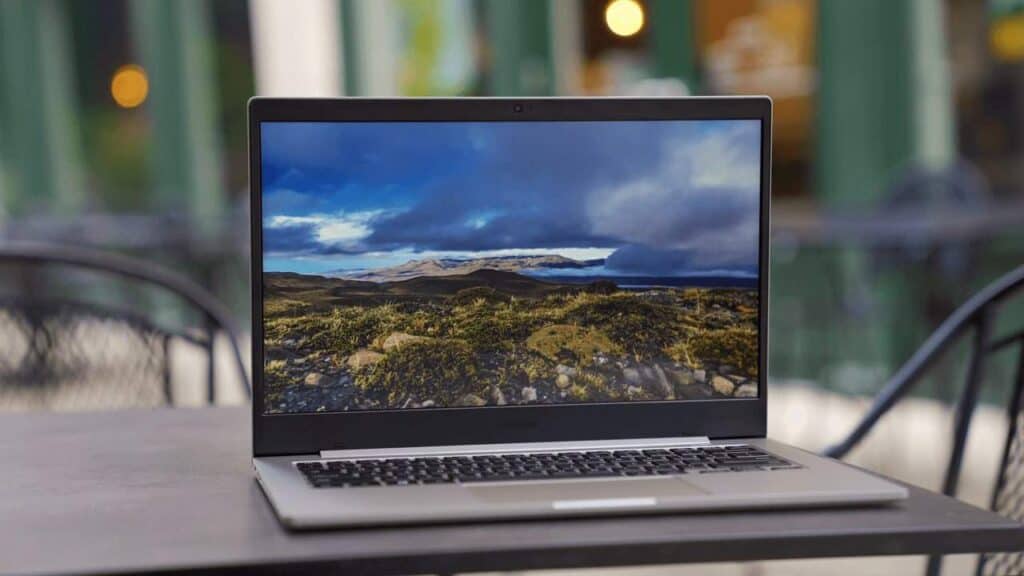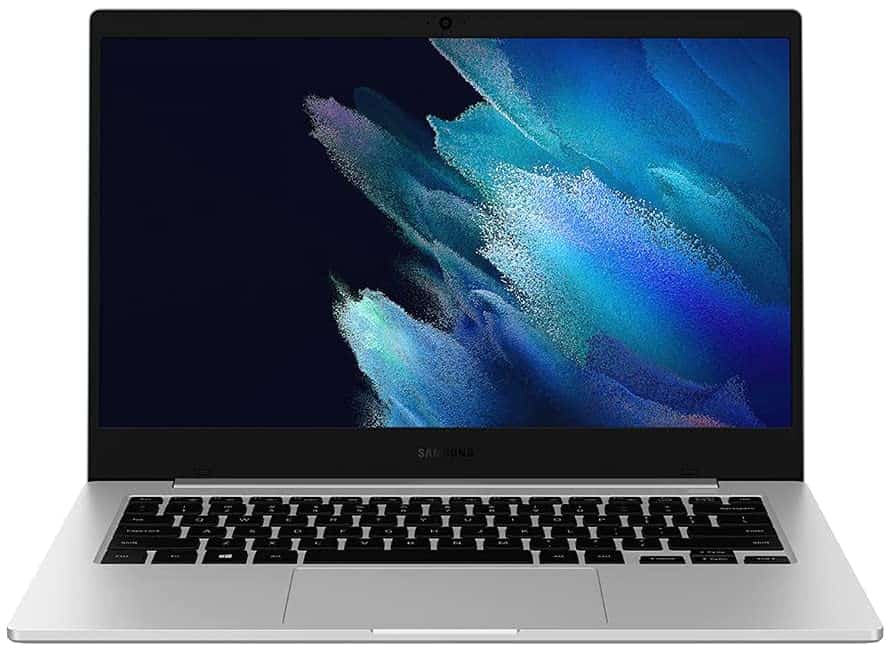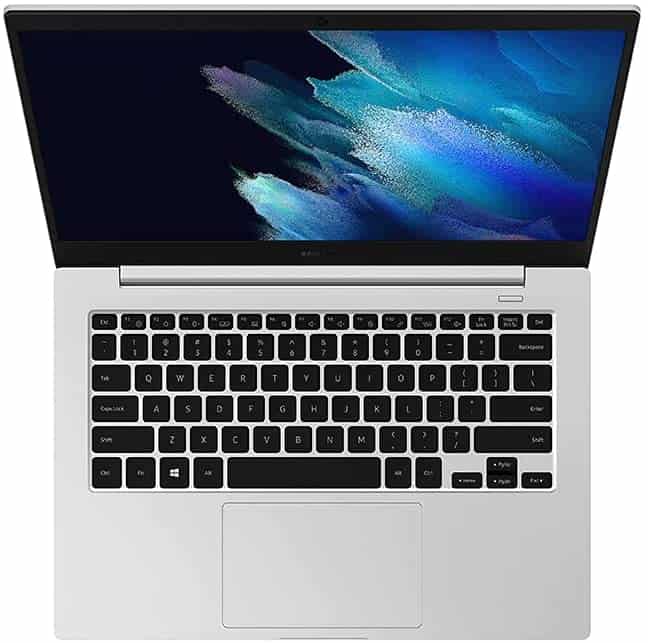Samsung Galaxy Book Go Review

Today's Best Deals
The Samsung Galaxy Book Go looks like terrific value on paper, offering the freedom of Windows in a stylish, portable and affordable system. Taking a leaf from Microsoft’s Surface Laptop Go, the Book Go looks like Samsung is taking a hit at the Chromebook market by offering a budget-friendly alternative to the hordes of ChromeOS portables in the market.
The Samsung Galaxy Book Go review unit I’ve got features a Qualcomm Snapdragon 7c, a similar chip packed inside the Acer Chromebook Spin 513. It’s paired with 4GB DDR4 RAM (can be upgraded) and a 128GB SSD, double the Acer Chromebook’s allocated storage.
But while the specs look great on paper, the Book Go is one laptop that will test your patience to the core. It’s marred by underwhelming performance and a dim display, which hurt its chances of it becoming one of our best budget laptop recommendations.

Samsung Galaxy Book Go Specs
- CPU: Qualcomm Snapdragon 7c
- RAM: 4GB LPDDR4x
- Screen: 14-inch 1920 x 1080
- Storage: 128GB eUFS
- Connectivity: Bluetooth 5.1, 802.11 ac (2×2), 4G LTE
- Camera: Built-in 720p webcam
- Weight: 3.04 pounds (1.38 kg)
- Size: 12.75 x 8.85 x 0.59 inches
Design and Features
The Samsung Galaxy Book Go looks like a MacBook Air M1, thanks to a clean, silver shell, and from a distance, it passes for a more expensive ultrabook. However, this illusion fades once you start using the laptop.
When held in your palm, the Book Go’s portable feels much rougher and slightly cheaper compared to the intricate finish on the Spin 513. This is a little shameful, considering what the rest of the competition has to offer. Despite that, it has decently thin bezels and a weight of 1.38kg, making it very portable to work or school.
That said, the Galaxy Book Go isn’t a convertible machine and its screen doesn’t support touch like you would with the Lenovo Flex 14. You can at least push the screen down, and it lays flat, offering a little flexibility than most clamshell laptops.
The use of an Arm CPU means the laptop doesn’t heat up as much as an intel or AMD laptop, meaning you need less cooling. This enables Samsung to keep the laptop’s profile quite slim.
For the keyboard, you get quiet, tactile feedback, but it doesn’t include a fingerprint reader and it isn’t backlit something that will be an issue to students who plan to use it in dim lecture halls. A large trackpad makes up for those flaws, which provides smooth tracking.
Port selection is quite reasonable. On the left, there’s a headphone jack, Micro SD card reader, and a Type-C port for charging. The right side has another Type-C, USB-A for connecting your hard drives, a security slot, and, intriguingly, a SIM card slot. Slotting in a SIM card with a data plan will enable you to use the LTE connection when away from a Wi-Fi router.
Finally, the Galaxy Book Go comes with a 14-inch 1080p panel, that sadly, offers mediocre performance, at best. With a quoted brightness of 150 nits, that seems very low for a laptop this price, with most competing laptops topping out 300 nits at least. In real-world use, it doesn’t offer half as good of a viewing experience as other similarly priced laptops I’ve reviewed.
Performance
The Samsung Galaxy Book Go is among the few laptops I’ve reviewed with outright performance issues. In a market filled with cheap Chromebooks with good performance stats, or some Windows laptops like the Acer A515-46-R3UB that ring rock-bottom prices but provide decent performance, the Qualcomm Snapdragon 7c and onboard Adreno 619 graphics combine to make a chronically slow Galaxy Book Go.
With a clock speed of 2.55 GHz, the 7c is by no means a slow processor for a laptop this cheap, and its benchmark results are comparable to the Acer Chromebook Spin 513, both running the same chip.
However, in real-world use, the Spin 513 feels much snappier than the Galaxy Book Go. When you load a handful of Chrome tabs, there’s a noticeable slowdown, and the less we say about multi-tasking, the better.

It seems like the Snapdragon 7c isn’t suited to handle the extra taxation of Windows 10 as opposed to the streamlined ChromeOS in Acer’s Spin 513. If you want a speedy Windows machine, you’re going to invest in something like the Acer Aspire 5 A515-46-R3UB (AMD Ryzen 3, 4GB RAM) or the 15-inch HP 15-dy2024nr (Intel Core i5, 8GB RAM).
Microsoft did announce that it’s looking to improve Windows compatibility for Arm devices in the future, but for now, the existing limitations for major apps arguably defeat the point of opting for Windows over Chrome OS.
Elsewhere, battery life is excellent. As a saving grace, the Galaxy Book Go offers great battery life – lasting just over half a day (13 hours and 19 minutes), this is quite remarkable, beating off pricey machines, including Microsoft’s Surface Laptop Go by nearly four hours.
Verdict – A budget machine to test your patience
The Samsung Galaxy Book Go is simply a mixed bag, but a hard sell at the very best. This budget Windows laptop – on one hand, has a very good battery life and beautiful design, but there are just too many compromises to make it a worthwhile pick over a Chromebook or VivoBook 15.
Overall, the Samsung Galaxy Book Go’s terribly slow performance and overall cheap design all combine for a less desirable machine. For the price, you’re better off spending on the Acer Chromebook Spin 513, and if Windows is a must-have, both the Acer A515-46-R3UB and Asus VivoBook 15 are excellent alternatives.
OUR VERDICT
EXPERT RATING
EXCELLENT
The Alienware M15 R6 shares its design with its predecessor but essentially adds 11th Gen Core i7 and GeForce RTX 3080 GPU power, bringing improved gaming performance to this standout gaming laptop.
Editors' Choice







